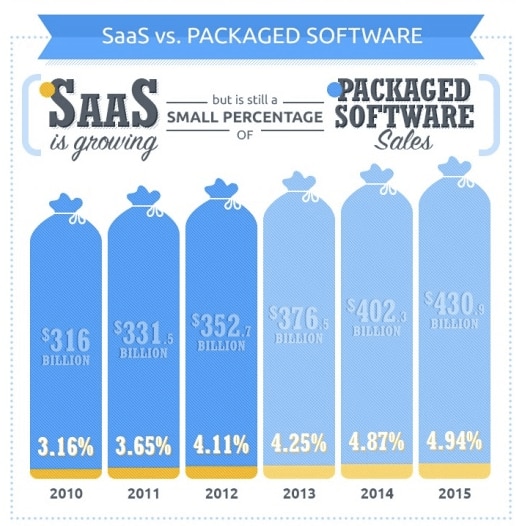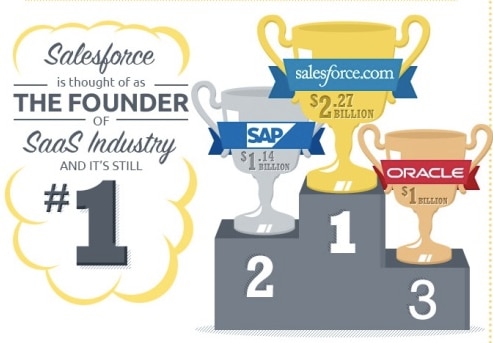Based on what you can do with the cloud, i.e. remotely located computers that use an independent server system to store data and run applications, we can describe many cloud services available today. One of which is the Software-as-a-service model, more popularly known as – SaaS. The whole myriad of Google Apps is a fine example; Google Mail, Google Docs, Google Talk. These are free for the user, but usually the application is rented, while application software is installed and operated from a cloud network. Monthly fees for this type of service are considerably lower than a price of a licensed copy of an application. Plus, no additional investment needs to be made in the machinery, in order to run everything smoothly.
Clients love SaaS for its simple upkeep, all new features are automatically added online, bugs and errors are treated faster than with IT staff, all the data backups already exist on the cloud, and moreover, the functions are independent of your operating system. All software application functions are accessed using only a browser and an internet connection.
Book a demo today to see GlobalDots is action.
Optimize cloud costs, control spend, and automate for deeper insights and efficiency.

Market Share: Only 4%
However, all benefits considered, and the investment involved and all the giants that set up the market, e.g. Salesforce, Oracle, SAP, Microsoft etc., SaaS still only accounts for the 4% of sales compared to packaged software.

According to Forrester, the SaaS software market will grow by 25% this year, to $59 billion. By 2014, they expect, it is to grow further to $75 billion – source – TechCrunch.
SaaS software market is to grow simultaneously with the number of smart computing products, far faster than the overall software market. Smart computing implies apps that provide direct access to to data that is used for decision making purposes.
US: The Leading SaaS Tech Buyers
US tech buyers are expected to make the biggest adjustment, as the US economy invests in technology, reaching a strong demand for new mobile, cloud and smart technologies. The market is to expected to grow by 5% in 2013, and by 6-7% in 2014. Europe will fall behind a bit due to its economic problems, and in the East-Asia Pacific, Japan will slowly but surely pick up from the Fukushima disaster, and China will see a rise in this market, after a 2012 slowdown; source – OpenView blog.

The number of mobile Web users all over the world has now topped 1 billion, and mobile market is expected to drive more than 50% of all IT market growth. This will set new challenges to SaaS software developers. As well as considering the growing usage of tablets.
SaaS Companies to Watch
The year 2013 brought many presumptions about who will continue, in terms of business companies, to dominate the SaaS market, and who is yet to arise. We bring a short sum-up list of the SaaS companies to watch from the Computer World:
- Salesforce: no.1 player in the SaaS market, a pioneer in the SaaS market
- SAP: the German software giant, came big to SaaS during the past year
- Oracle: Oracle’s core expertise is in human capital management and databases
- Microsoft: more moves into SaaS market are expected
- Workday: SaaS financials and HCM vendor
- Intuit: millions of small businesses use Intuit’s QuickBooks software
- Zuora: provides billing, e-commerce and finance modules
- Single sing-on for SaaS: Okta, Ping Identity, OneLogin
- Cloud ERP for manufacturers: NetSuite, Plex Systems, Kenandy






